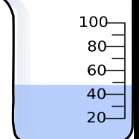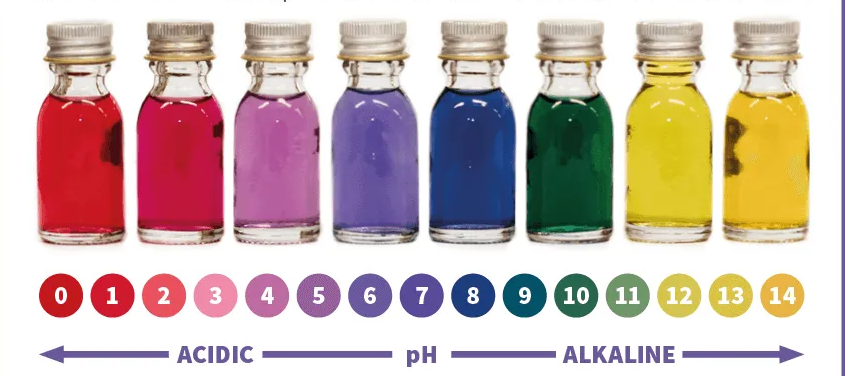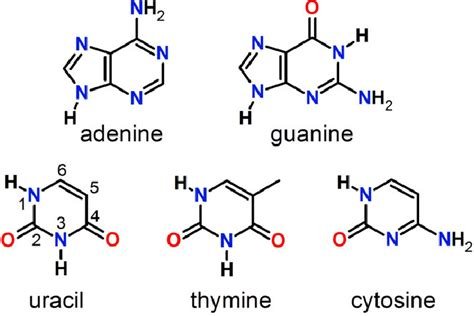-
Posts
248 -
Joined
-
Last visited
Content Type
Profiles
Forums
Events
Everything posted by paulsutton
-
I am using some Red Cabbage indicator to investigate the pH of seawater collected locally. I seem to be getting results that imply that local seawater is acidic. I have attached a photo and also attached a pH scale portion of the CompoundChem website https://www.compoundchem.com/2017/05/18/red-cabbage/ According to : https://centerforsurfresearch.org/chemical-composition-of-seawater/ "Seawater has a slightly alkaline composition, ranging between 7.5 and 8.4". Granted, seawater pH probably varies around the world. But this just seems way off. In which case the colour should surely be more towards Purple / Blue The pH indicator does work as I used so know that adding acids or alkalis produces the expected colours. Has anyone else tried this ? Could there be a reason for the acidification, granted the sea was a bit rough when this was collected so there is a chance the colour and acidity could be due to something else being mixed in with the water. I will try and collect some more seawater on a calm day see if that is any different. Just asking as it may help my investigations further. Thanks Paul "
-
I get lab kit from Better Equipped https://www.betterequipped.co.uk/ They are really good, send stuff out quickly and haver a really good range of items. They do data logging kit, digital thermometers etc. I know you said not lab ware but it should be fine for both lab work and home lab / hobby work too. Hope this helps Paul
-
I have just bought a burette, mostly so I can practice titration with water, but will hopefully move on to doing some science with this, it is a plastic 25ml. Before I start any hints / tips on keeping this in good condition, e.g make sure the tap stays working properly,. I have heard they can seize up, but not too sure. I am guessing cleaning should be a case of running water through. Thanks for any help I did search for this on the forum so will keep looking but any response should help others too. Regards Paul So from this is running a salt water solution through this better than perhaps, tap water or ideally de-ionised water. I can make up salt solutions for this easy enough too. Thanks Paul Is someone able to delete the replies to this please, It seems something got merged with my reply which I thought was a reply to my thread. I don't understand how this message merging thing works Thanks Paul
-
I agree. While the internet does make it easier to cite references, for example arXiv you can click a link and get the correct bibtex reference for the related article, that you just copy / paste. BUT you still have to put the effort in by reading the articles and finding the information you want to refer to. then writing the text around any citations. If people want to cheat, then I am sure at some point in the future that will catch up with them. I did read the other day that the Microsoft and Google AI bots were citing each other and actually citing misinformation in doing so. So while AI can help us write better I don't think it can, or will be able to do all the work for us. The students who put in the effort will probably always stand out over those that don't.
-
How would something like cooking oils (sunflower, vegetable, olive) work for this. ?
-
I have seen a documentary that looked at life on the deep ocean floor being supported by radioactive decay. Not sure if it is helpful here. Earth’s Underground Worlds May Run on Radioactive Decay https://www.theatlantic.com/science/archive/2021/05/radioactive-decay-underground-worlds/619030/
-
I think adding bicarbonate of soda and vinegar in a bag (put holes in top of bag to let CO_2 out, will cause the mixture to act in a similar way to the instant freeze packs you can get. I have not tried the above yet, but thought about putting the vinegar in a syringe, so once the bag is sealed the reaction can be triggered more easily. Sounds like an interesting experiment you want to propose, perhaps using different freeze methods allow comparison of results, so freeze spray, ice, icepack, ice + salt etc Paul Could use de-ionized water, as that may have less contaminants, however if the purpose of this experiment is to test normal tap water, then maybe this could be your 'control' for a comparison point. Paul
-

Is the Big Bang theory a complete model of the universe?
paulsutton replied to caryunxwn's topic in Astronomy and Cosmology
Article in Universe Today from 5th March 2023, seems to suggest that there could be a 2nd big bang which produced Dark Matter. https://www.universetoday.com/160285/the-universe-may-have-started-with-a-dark-big-bang/ Which seems an interesting idea, to try and explain where dark matter comes from. Paul -
Cool, thanks for this. I just tried this using paper from a hole punch, I have a small 35mm film pot which I had collected some of the paper from my hole punch over a period of time. they worked really well, I would guess if anyone has a cross cut shredder that may work to produce small bits of paper too, would be interesting which is better as the bigger the pieces the heavier they are (or at least heavier in relation to the static charges). Psul So does adding Magnesium Ribbon to Vinegar produce Magnesium Acetate ? Paul
-

BBC science news article [Antarctic and Arctic sounds]
paulsutton replied to paulsutton's topic in Science News
Thanks You would think the BBC would do better than this eh Paul -
I found the following article on the BBC news science website The Antarctic and Arctic sounds rarely heard before https://www.bbc.co.uk/news/science-environment-64514258 With reference to this." a seal that sounds like it is in space". Is this me, or does this just sound sloppy. As far as i am aware sounds don't travel through the vacuum of space. Also to make such a comparison we would need a proper frame of reference to compare the sound to, e,g an actual seal in space I do understand the other comparisons "Singing" ice, and a seismic airgun thundering like a bomb . As for example the latter would be on earth anyway, and ice cracks and creaks too. Or am I just misinterpreting that statement. Or should I try and avoid articles that are meant to reach non scientific people. Thanks Paul
-
Thanks for this, will replace them, I suspect that soaking the paper in water resulted the dyes leeching out. It is all part of the learning process eh Paul
-
I just wondered what was in Universal Indicator paper, I have some really old stuff here at home. It doesn't seem to work very well. however soaking some in a beaker of water, turned it blue. I tried to investigate further and see if this could actually be used as indicator, but my results seem rather inconclusive. It did turn citric acid a pale pink colour, but it didn't change colour when added to bicarbonate of soda, which given that is alkali, it would turn towards the blue / purple anyway depending on the pH. So just asking what is in this and if it has a shelf life, I think mine could be 20+ years old, so probably not much good any more.
-
So another question here, which may help others too, is do I really need 1 Mol concentration for simple experiments, If I wanted to make 0.5 mol but the same amount 250ml, I guess would use 24g as that is 1/2 of what is needed for 1 mol
-
Good point, thanks
-
I want to make a solution of Citric Acid, for experiments, so just asking here to make sure my method is correct So to make 250ml of 1M Citric Acid and having looked up the Molecular weight of Citric Acid: I need to calculate as follows Producing 250ml – so need to weigh out ¼ of the molar mass 192.12g / 4 = 48.03g which is the same as 0.25 (ml) x 192.12g Where 192,12 is the mass of Citric Acid therefore 1 Mol As i Mol is Formula Weight in 1 Litre of water, then we only need 1/2 of this as 250 ml is 1/2 of litre Therefore just dissolve 48.03 g in 250ml water. As I don't have a lab balance, Will use 48g, This is for home Chemistry anyway. Just checking, Thanks Paul
-
I can try with Citric Acid, not sure if I have anything else, Sodium Hydrogen Sulfate is acidic, but i don't think Magnesium will displace the Sodium. This is the fun of home chemistry, experiments and researching this.
-
Thanks for this, I will have another go with the Zinc, could be that it is again older, and also tarnished / oxidised. I have attached a picture of the magnesium, as a comparison before and after cleaning a piece. The zinc reaction may just be a lot slower, or hindered by the contamination. With Mg(Ac)2, I take it the (Ac))2 is for acetate, so a shorthand form of Mg(CH3COO)2 Just asking as If I need to explain this to others, it makes it easier. Nice to know about these shorter forms of writing formulaie The zinc I have here is very grey, as they are graduals a little more challenging to scrub wit something abrasive, compared with the Magnesium.
-
Thanks for this, much appreciated it is a fun experiment to do. I have just given the Magnesium a rub with a sanding block, works a treat, nice and shiny as it should be. Will look up the electro chemical series too. Regards Paul
-
In an attempt to get back in to doing some more home chemistry and also come up with ideas for a STEM group i am running,. I recently had a go at seeing what would happen if various metallic elements were added to White Vinegar. So using 3 test tubes, Magnesium Ribbon, Copper foil and Zinc Granuals (all i have access to at the moment), I added these to the vinegar So given that the latter two don't react, I can probably re-use, but rather than simply putting back in the containers they came from, is there a easy way to clean them (not sure if that is the right term). I was thinking of just adding to a beaker of water to hopefully remove any residue of White Vinegar (Acetic Acid) so basically giving them a quick wash and dry them off. It may not be needed, however it is probably good practice to do so. Also, as the magnesium reacts, As it has been it a container for a long time before I used it, and most of the shine has gone so it is tarnished, what is the best way to clean it please. I have tried a rubber thing I use to clean vero / strip board before soldering, and also a wire brush, anything else i can try. Would be nice to have a better surface area for future attempts. What did surprise me what that within an hour the magnesium had reacted which is kinda cool really, ( I didn't use much to begin with) not quite sure what to do with what was produced, which i think is probably Magnesium Acetate, must be able to use for some other experiment somewhere. Thanks for any help / advice. Paul Sutton
-
I found a link to the 2022 highlights from the Journal of experimental biology on Mastodon, so just sharing here as it may be of interest to anyone here. https://journals.biologists.com/jeb/pages/highlights-2022 This is a free download. Hope this is of interest, I am not connect to them in anyway, just followed them and am sharing. Paul
-
1
-
Thanks for this, I did sort of build one of these up at the STEM group meeting but the people who this was aimed at didn't make it. So hopefully can do this at a future event.
-
Just a quick question about this, I downloaded the attached from Openclipart. I am a little confused as to why Uracil and Thymine appear identical, other than the numbers. I am not too sure what the numerical values around Uracil represent. Could someone clarity what these are please. If the molecule is wrong then I will just have a look for a better resource for this. As far as I am aware Uracil is not one of the main 4 actual nucleobase. However would be good to have a little more understanding of what I am looking at here, as I am planning an activity to build these molecules from molymods as part of a STEM Group activity. Thanks Paul
-
Interesting, sounds like it is something that at some point in the future will be a possibility, but it is clear generally that this would also need huge investment long term, and also assurance that people have or will be able to develop the skills needed to work at these power stations at all levels. I can't see the current government planning that far ahead or working with other parties to ensure some sort of continuity of policy to ensure long term stability of projects.
-
Nuclear fusion plant to be built at West Burton A power station https://www.bbc.co.uk/news/uk-england-nottinghamshire-63119465 Interesting article, how viable is this method of generating power? just posting here for comments and perhaps we can collate related articles and papers etc relating to fusion technology. Paul



